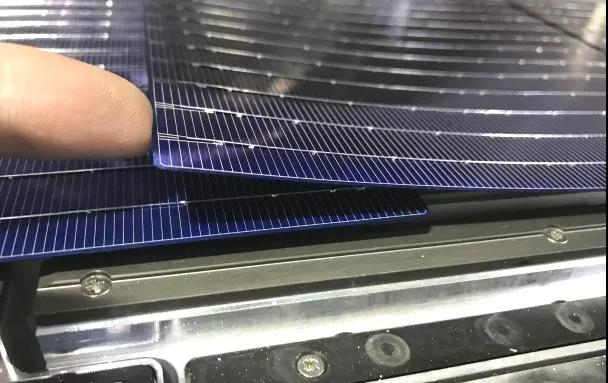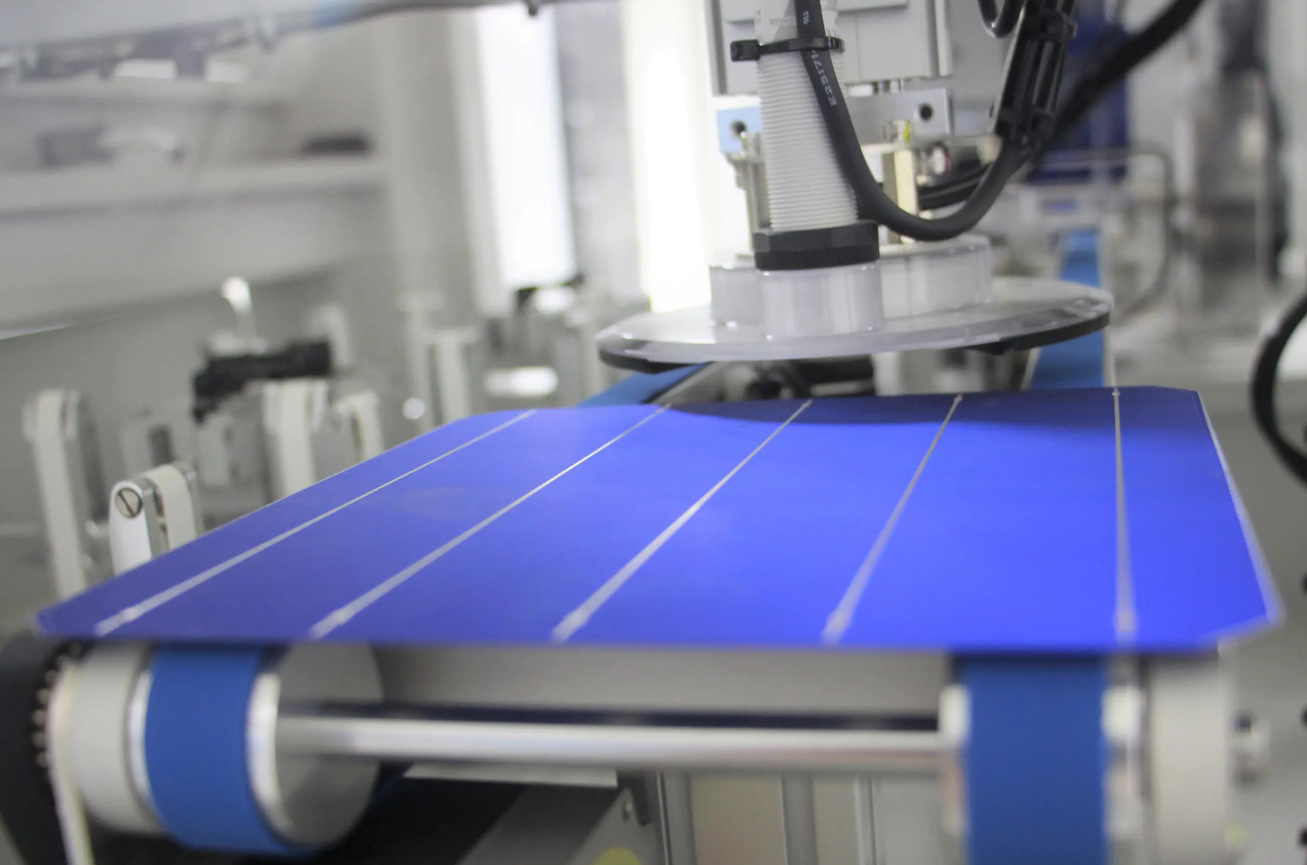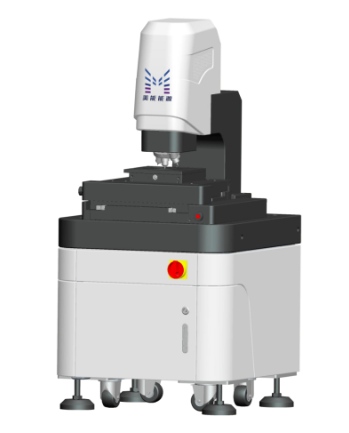
Quantum Efficiency Tester
PL/EL Integrated System
PV-Reflectumeter
3D Confocal Microscope
In-Line Four Point Probe Tester
Four Point Probe Tester
In-Line Thin Film Thickness Tester
Raman Spectrometer
FTIR Spectrometer
Spectrophotometer
Automatic Spectroscopic Ellipsometer
Contact Resistance Tester
Ultra depth of field 3D microscope
Auto Visual Tester
VMM PV Vision Measuring Machine
Solar Cell Horizontal Tensile Tester
Steady State Solar Simulator for Solar Cell
Solar Cell UV Aging Test Chamber
Solar Cell Comprehensive Tensile Tester
Visual Inspection Tester
Wet Leakage Current Tester
PV Module EL Tester
PV Module UV Preconditioning Chamber
Steady State Solar Simulator for PV Module
Current Continuous Monitor
Potential Induced Degradation Test
Bypass Diode Tester
LeTID Test System
Reverse Current Overload Tester
Impulse Voltage Tester
Hipot Insulation Tester
Ground Continuity Tester
Hipot Insulation Ground Tester
Damp Heat Test Chamber
Humidity Freeze Test
Thermal Cycle Test Chamber
Dynamic Mechanical Load Tester
Static Mechanical Load Tester
Hail Impact Tester
Robustness of Termination Tester
Module Breakage Tester
Cut Susceptibility Tester
Peel Shear Strength Tester
Universal Testing Machine (Single-arm)
Universal Testing Machine (Double-arm)
Glass Transmittance Tester
Acetic Acid Test Chamber
EVA Degree of Crosslinking Test System
Junction Box Comprehensive Tester
Drop ball tester
Semi-automatic scanning four-probe tester
Stylus Profilometer
Maximum Power Point Tracker
Perovskite Glass Transmittance Tester
Perovskite P1 Laser Scribing Multifunctional Testing Machine
Perovskite Online PL Tester
Perovskite Online Sheet Resistance Tester
Online Perovskite Film Thickness Tester
Perovskite Process Inspection Workstation
Portable IV Curve Tester
Portable EL Tester
Portable Thermal Imaging Tester
Solar Module Multi-Channel Testing System
PV Inverter Power Quality Tester
Drone EL Tester
IV Tester
IVEL Cell Sorting Machine
The Principle of Heterojunction (HJT) Solar Panels
Date : 2024-01-26Views : 180
Everyone knows that the working principle of solar cells is based on the photovoltaic effect of the semiconductor PN junction. The so-called photovoltaic effect is an effect in which when an object is exposed to light, the charge distribution state in the object changes to generate electromotive force and current. When sunlight or other light irradiates the PN junction of a semiconductor, a voltage will appear on both sides of the PN junction, which is called photovoltage. In this section, this issue of Millennial Solar will introduce the principles of heterojunction cells in detail.
working principle
Heterojunction solar panels work similarly to other photovoltaic modules, under the photovoltaic effect. The main difference in this technology is the use of three layers of absorbing materials that combine thin films and traditional photovoltaic technology. The process involves connecting a load to the terminals of the module, where the photons are converted into electrical energy and create a current, which flows through the load.
To generate electricity, photons strike the P-N junction absorber and excite electrons, causing them to move to the conduction band and create electron-holes (e-h).
The excited electrons are collected by the terminals connected to the P-doped layer, creating a current flowing through the load.
After flowing through the load, the electrons flow back to the back contact and recombine with the holes, ending that particular e-h. This happens constantly as the module generates electricity.
A phenomenon called surface recombination occurs in standard c-Si PV modules, which limits efficiency. During this process, excited electrons pair up with holes on the surface of the material, causing them to recombine, without the electrons being collected and flowing as an electric current.
To reduce surface recombination, heterojunction cells separate highly recombinantly active (ohmic) contacts from wafer-based layers using a passivated semiconductor film with a wider bandgap layer made of a-Si:H. The buffer layer makes the charge trickle slow enough to generate high voltages but fast enough to avoid recombination before the electrons are collected, thereby increasing the efficiency of the heterojunction cell.
During light absorption, all three semiconductor layers absorb photons and convert them into electrical energy.
The first photons that arrive will be absorbed by the outer a-Si:H layer, converting them into electrical energy. However, most photons are converted by the c-Si layer, which has the highest solar energy conversion efficiency among the materials in the cell. The remaining photons are eventually converted by the a-Si:H layer on the back of the module. This three-step process is why single-sided heterojunction solar cells achieve solar efficiencies of up to 26.7%.

Heterojunction and double-sided panels
The structure of bifacial panels is similar to heterojunction solar panels. Both include passivation coatings that reduce surface-heavy surface combinations and increase efficiency.
Heterojunction technology has an efficiency of up to 26.7%, but bifacial technology has an efficiency of over 30%. The odd side is that the bifacial PV modules used to achieve this efficiency combine heterojunction technology with bifacial and other technologies.
Heterojunction cells can be designed for single or bifacial use, which reduces the reason for comparing them to each other as they can be combined together to create superior bifacial heterojunction solar panels. The main difference is that bifacial can use other underlying technologies than heterojunction technology.

3D Microscope
Millennial 3D Microscope ME-PT3000 is a high-speed confocal scanning microscope for accurate and reliable 3-dimensional (3D) measurements. Real-time confocal microscopy images are achieved through fast optical scanning modules and signal processing algorithms.
ME-PT3000 3D microscope is an optical instrument specially used in the photovoltaic industry to conduct quality inspection of the grid lines and textured surfaces on the surface of photovoltaic cells. Based on the principle of optical technology, combined with precision Z-direction scanning module, 3D modeling algorithm, etc., the device surface is non-contactly scanned and a 3D image of the surface is established. The height and width of the grid lines on the photovoltaic cells and the textured texture are measured through the system software. The number of pyramids on the surface is quantitatively detected to provide feedback on the quality of photovoltaic cell cleaning, texturing and screen printing processes.

E-mail: market@millennialsolar.com
This is the working principle of heterojunction HJT cells. If you have any questions, please contact us. Millennial Solar will continue to work hard in the photovoltaic industry.

































































